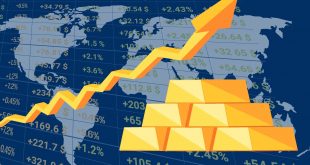Oil prices stabilized on Monday, amid anticipation among investors for Chinese economic data, in search of signs of recovery in demand in the second-largest oil consumer in the world.
Brent crude futures fell seven cents to $86.24 a barrel by 0746 GMT, and US West Texas Intermediate crude fell six cents to $82.47 a barrel.
The two benchmarks rose last week for the fourth consecutive week, the longest streak of gains since mid-2022.
The release of Chinese first-quarter GDP data this week is expected to have a positive impact on commodity prices, and the International Energy Agency expects most of the growth in oil demand to come from China in 2023.
The data is due to be released at 0200 GMT on Tuesday.
However, the International Energy Agency warned in its monthly report that the production cuts announced by the OPEC + group threaten to increase the expected oil supply shortage in the second half of the year and may harm consumers and affect the recovery of the global economy.
The scarcity of supplies is increasing with the continuation of the cessation of pumping oil exports from northern Iraq to the Turkish port of Ceyhan, about three weeks after the issuance of a ruling in an arbitration case that Ankara pays compensation to Baghdad for unauthorized exports.
The rising cost of crude oil supplies from the Middle East, which meets more than half of demand in Asia, is already straining margins for refiners, forcing them to secure supplies from other regions.
Refining companies are also working to increase gasoline production before peak demand in the summer, while cutting diesel production in light of shrinking profit margins.
She added that US corporate earnings could provide clues about the Fed’s policy path as well as the dollar’s path.
The dollar rises as interest rates rise, making dollar-denominated oil more expensive for holders of other currencies.
Dealers are betting that the Federal Reserve will raise the lending rate in May by another quarter of a percentage point as they expect to cut interest rates, as they usually do in a slowdown, later this year.
 Noor Trends News, Technical Analysis, Educational Tools and Recommendations
Noor Trends News, Technical Analysis, Educational Tools and Recommendations





